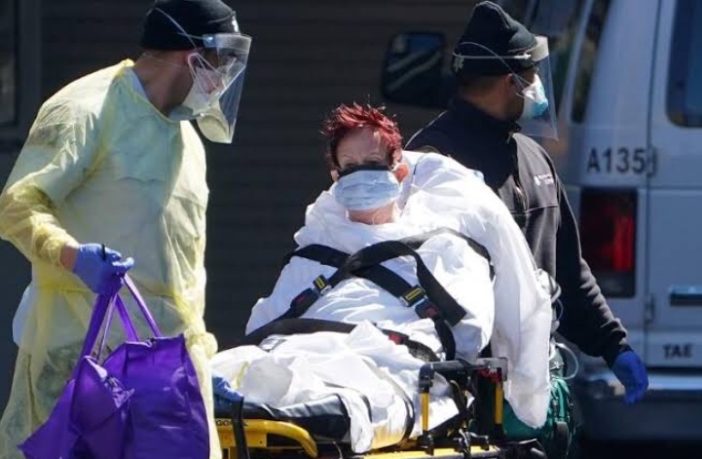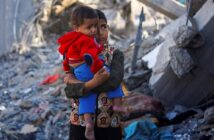As the coronavirus pandemic’s U.S. death toll raced past 1,000 people, hospitals and government authorities in New York, New Orleans and other hot spots grappled on Thursday with a surge in cases and a dire shortage of supplies, staff and sick beds.
Medical facilities were running short of ventilators and protective masks and were hampered by limited testing capacity as the number of confirmed U.S. cases of COVID-19, the respiratory disease caused by the virus, rose to about 70,000.
“Any scenario that is realistic will overwhelm the capacity of the healthcare system,” New York Governor Andrew Cuomo told a news conference. The expected shortfall of ventilators – machines that support breathing for people who have lost the ability on their own – was substantial, he said.
“The number of ventilators we need is so astronomical – it’s not like they have them sitting in the warehouse,” Cuomo added. “There is no stockpile available.”
The state’s death toll stood at 385, up from 285 a day earlier, the highest in the country. Based on the large number of hospitalized patients on ventilators, that number is expected to continue to increase, Cuomo said. The number of confirmed infections in New York rose to 37,000 – about half the U.S. total – including 6,400 in the past day.
The goal is to get to a capacity of 140,000 hospital beds, up from the current 53,000, and authorities are scouting new sites, Cuomo said.
Asked about media reports of some New York City healthcare workers resorting to using plastic trash bags to try to protect themselves, Cuomo acknowledged issues with the distribution of protective equipment and said there was enough in stock for the “immediate need” but not for the longer term.
New York hospitals were scrambling to comply with Cuomo’s directive that they increase capacity by at least 50%. At Mount Sinai Hospital’s Upper East Side location, rooms were being constructed within an atrium to open up more space for beds.
At Elmhurst Hospital in New York’s borough of Queens, about a hundred people, many wearing masks with their hoods pulled up, stood in line behind barriers outside the emergency room entrance, waiting to enter a tent to be screened for the coronavirus.
Deborah White, vice chair of emergency medicine at Jack D. Weiler Hospital in the city’s Bronx borough, said 80% of its emergency room visits were patients with coronavirus-like symptoms.
“We are rapidly discharging the patients that are able to be discharged and we are developing our surge plan across the hospital system,” White said. “This is what emergency medicine is.”
A running tally kept by Johns Hopkins University showed that at least 1,124 people in the United States had died from COVID-19, which has proven especially dangerous to the elderly and people with pre-existing medical conditions.
PROBLEMS IN NEW ORLEANS
While New York is the coronavirus epicentre in the United States now, Louisiana – driven by a dire situation in New Orleans, its biggest city – could be the next one.
Dr. Rebekah Gee, head of Louisiana State University’s healthcare services division, said on Wednesday, “You can manufacture masks, you can create more beds. But what you can’t manufacture is workforce. You can make a mask in a day. You can’t make a pulmonary critical care doc in a day.”
Warner Thomas, chief executive at Ochsner Medical Centre, Louisiana’s largest hospital system, said: “We are seeing an escalation in cases across our system.”
Underscoring the threat to healthcare workers striving to cope with the pandemic, Thomas said 300 Ochsner employees were under quarantine, including 60 diagnosed with COVID-19.
Asked about guidelines being drafted on how to allocate ventilators to patients in case of a shortage, New Jersey Governor Phil Murphy said such bioethical discussions “haunted him” but were unavoidable in the current situation.
“We have to hope for the best, but plan for the worst,” Murphy told a news conference.
About half the United States was under stay-at-home orders to try to curb the spread of the virus, with its side effects of strangling the economy and unleashing a wave of layoffs.
In fresh data that highlighted the pandemic’s economic damage, the Labour Department said the number of Americans filing claims for unemployment benefits last week soared to a record of nearly 3.28 million. That was nearly five times the previous weekly record of 695,000 during the 1982 recession.
Anthony Fauci, director of the U.S. National Institute of Allergy and Infectious Diseases, told WNYC public radio that the changing weather could help fight the virus because generally warm and moist conditions are better than a cold, dry winter. Fauci said the virus could return for the next Northern Hemisphere winter.
“We hope we get a respite as we get into April, May and June. It is likely to come around next season because it’s a very vigorous virus,” Fauci said.
Outside New York and New Orleans, other hot spots appeared to be emerging around the country, including Houston and Detroit.
Brandon Allen, 48, bought groceries in Detroit for his 72-year-old mother who has tested positive for the coronavirus and was self-quarantining at home.
“It’s surreal,” Allen said. “People around me I know are dying. I know of a couple people who have died. I know a couple of people who are fighting for their lives. Everyday you hear of another person who has it.”




